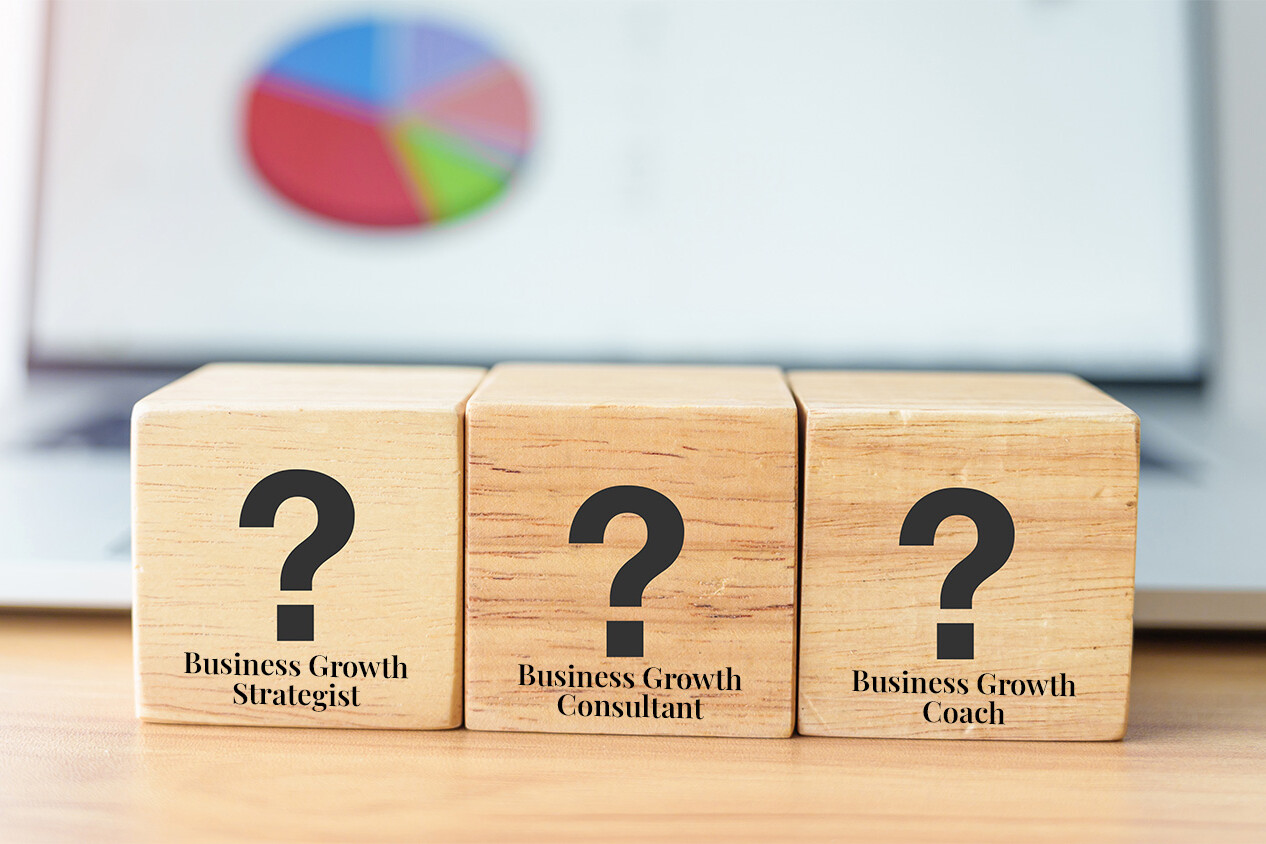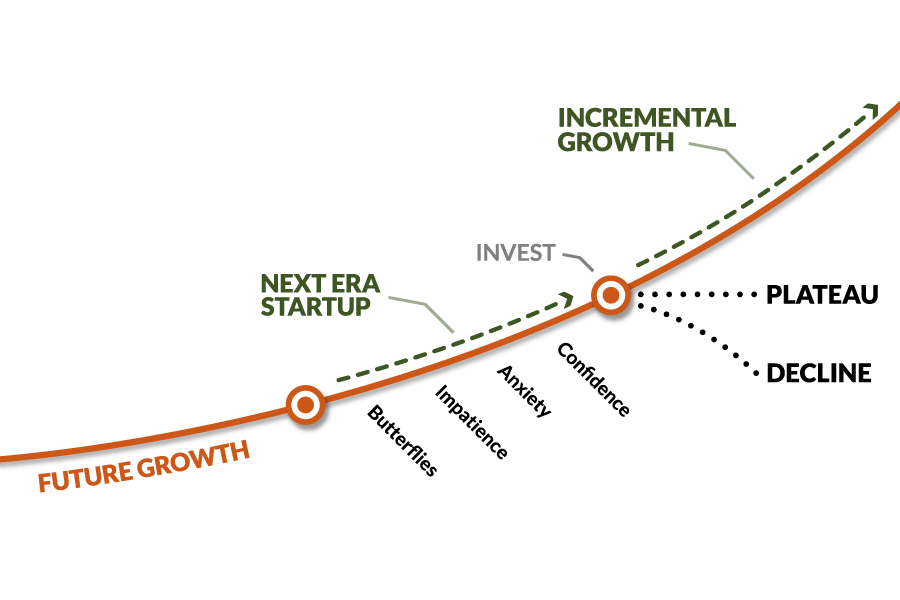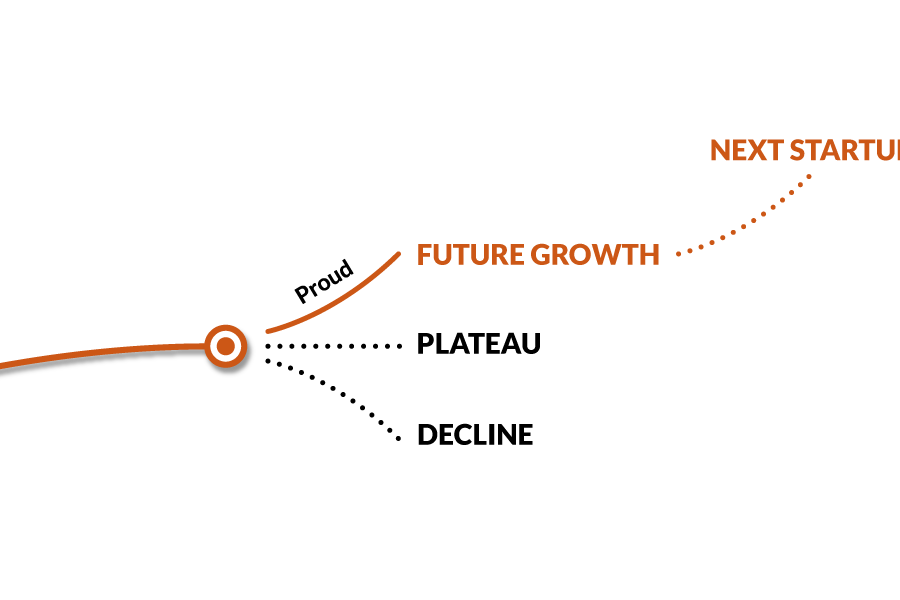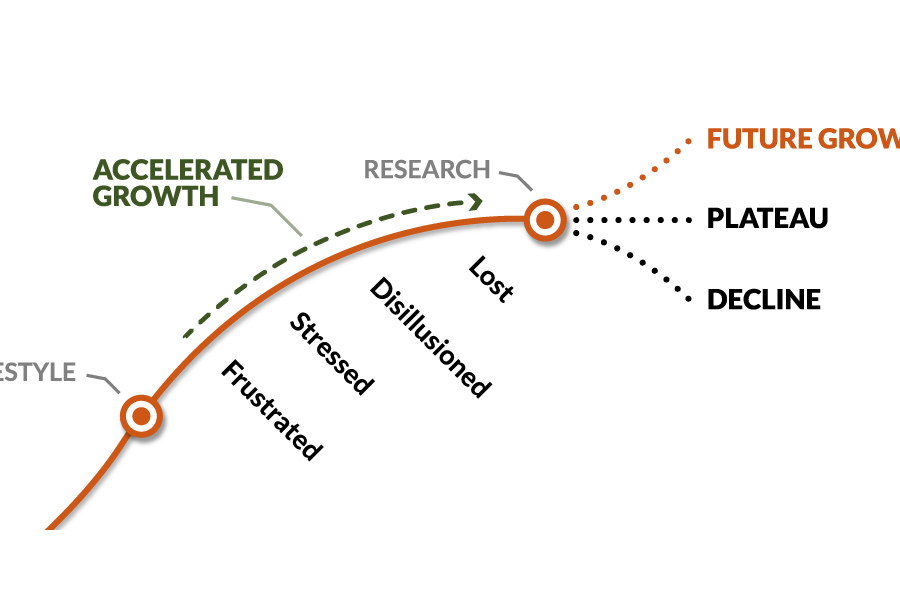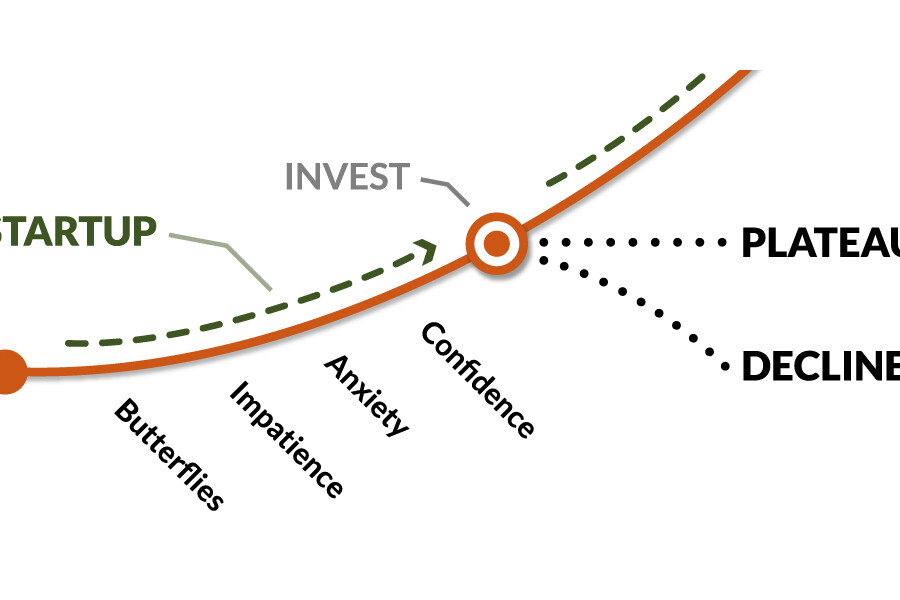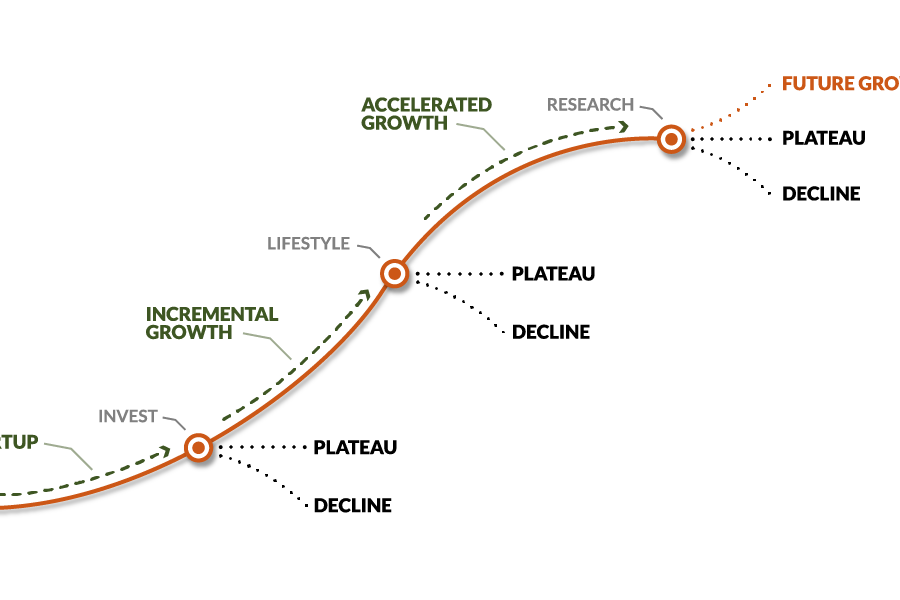How To Navigate The Surprisingly Awesome Stages Of Incremental Growth
In the world of business, growth is essential for long-term success. Every Company goes through different phases, each marked by specific feelings, behaviors, and decisions. This blog covers navigating Incremental Growth after the Startup phase.The Incremental Growth phase is characterized by steady progress and increasing opportunities.
After feeling confident and pushing forward with investments within the business, it now progresses into this phase. Four stages have unique feelings that entrepreneurs and executives commonly experience: feeling Stretched, Good Times, Relaxed, and the final element of this stage, feeling like they have won the Lottery. Each stage brings unique challenges and opportunities, influencing behavior, decision-making, and the actions required to navigate them successfully.
Stretched: Harnessing Discomfort for Growth
When a business enters the Stretched stage, it has typically made significant investments based on the confidence gained as they can see that the Company will succeed at the tipping point at the end of the Startup phase. These growth investments are about increasing the capacity of the business. Sometimes paying for them can be challenging. Others, it’s about keeping up with the demand with the limited resources available. The uncomfortable tension sometimes means that the ball gets dropped as the business grows but doesn’t have its processes and training solidified.
Behavior: Getting Everything Done
During the Stretched stage, a frantic feeling builds from trying to get everything done and ensuring enough revenue to pay for the investments and the increased costs. Innovations and automation where simple and low cost often arise from the need to do more with limited resources and find ways to grow operations effectively. This is a very different feeling, the frantic feeling as previously it was in hope, and now it is about keeping up with the business.
Decision Making: The Fear of Missing Out
Often feeling like there are too many plates to spin, some decisions get forgotten or dropped until they become urgent. Usually, there is a fear of missing out as opportunities present themselves, and there is a danger of committing to too many things at once, servicing too many customers.
Decision making is often quick, and frenetic, as the pace of events makes decision-makers feel like there is little time available to think things through. Business owners and leaders can easily over-stretch themselves in pursuit of growth and the desire to make up for the lack of revenue when they started the business.
Action to Progress:
To successfully navigate through this stage, several measures can be taken:
- Understand the organizational capacity and how full it truly is. Build a capacity plan. The inefficiency of growth makes it easy to feel full when the organization is far from it.
- Increase capacity as defined in the plan and work to make the existing capacity efficient.
- Be clear on expectations and, if required, reset them. Don’t try to get to the lottery phase by over-investing or growing too quickly without the cash flow to underpin it.
- Often a reality check is required, as well as slowing down and focusing the business and its resources on what can be done well.
- It is being aware of the demands on the team and the frantic nature of how the leadership shows up for both the workplace and the customers.
Example: Manufacturing Company
A Manufacturing Company specializing in electronic components in an emerging market entered the Stretched stage after securing a significant contract with a new customer.
In attempts to meet the contract’s demands, the existing customers were slow-rolled, thinking they could settle things down shortly. Both the large new customer and the current customers because unhappy with the customer service, the quality of the goods made and the timeliness of the deliveries.
The Company realizing it was in danger of destroying the business it had built, worked through, and created a capacity plan and modeling and understood the further investments needed to be made and where efficiency in the manufacturing and the business operations required to be gained quickly.
Slowing existing sales activity down until it could confirm to the existing customers that honoring their commitments and expectations and breaking down the job roles to hire functional specialists was key.
Working with its customers to manage ongoing expectations and what it was doing to ensure supply allowed trust to be rebuilt.
Good Times: Relaxing into Predictability
As the team works through the Stretched stage, the feeling changes. Revenue steadily increases and is becoming predictable. Profits are reinvested into growth, and the business starts to feel like there is substance to it. During this stage, the firm has momentum, and the bills can be paid as cash flow is also predictable and feels planned. Some companies look to take out additional funding to support a steady increase in their capacity to meet predicted demand. The business starts to feel established.
Behavior: Building on Momentum and Confidence
During this stage of the Incremental Growth phase, the behavior observed is systematic spending on investments that make commercial sense. Some invest in more capacity, and others in ways to deliver more with the same. This behavior reflects a belief in their ability to capitalize on their success and ensure sustainable growth.
Investment blindspots are often linked to the infrastructure foundation of the business or the culture that is developing as the team grows.
Decision Making: Strategic Investments and Expansion
Most of the decisions focus on investments and expected returns. Data builds that allow some predictions of the returns rather than the guesses made in the Startup phase. Business owners and leaders evaluate opportunities carefully, weighing the potential risks and rewards. They may diversify their revenue streams by adding new products or services to the existing customer base. Some look to add new offices and facilities, assuming these will quickly come online and not follow their Startup phase. Typically, the first investment in branding and upgrading the marketing often occurs now to support the drive for steady incremental growth.
Action to Progress: Growth-oriented Investments
The key actions during this stage focus on investments:
- Invest in increasing revenue capacity to the plan.
- Ensure that infrastructure capacity is also being built to support the revenue; often, this is left until the infrastructure is highly stressed.
- Define and manage the organizational culture and the behaviors now.
- Review the team’s capability to where the business is going and be clear at what capacity level these skills will cause commercial and cultural issues.
- Identify blindspots and plan the investments required and what the triggers are.
Example: Software Solutions Company
Software Solutions, a company specializing in implementing CRM solutions for its clients, entered the Good Times phase as acceptance of SaaS-based solutions. To capitalize on the market, it invested in increasing and training staff that could deliver its solutions to its clients and in technologies that automate and standardize the implementation methods and reduce the chance of human error.
Their investments allowed them to increase the number and speed a small team could implement a client’s configured system and data and move away from the industry headcount standards, recruitment challenges, and margins.
Relaxed: Pitching Bigger
The business now feels like it is in its stride. Investments have mostly paid off, and each month the Company has grown from the previous month.
At the Relaxed stage, the leader feels confident and as the name suggests, relaxed. Larger opportunities continue to present themselves, and the sales team can get appointments into their targets. The business is well-regarded in the industry, and the prior investments in brand and marketing are paying off.
Often the original vision is coming near to being achieved.
Behavior: Looking for Bigger Opportunities
Companies in the Relaxed phase tend to focus on ongoing operations, reinforcing what works well and finding ways to generate further efficiencies.
Sales are predictable. Everyone works well together and is glad to be associated with the business. At a later stage, staff typically lament and call this time the ‘good old days.’
As this stage progresses, it is common for a feeling of invulnerability to be experienced as it enters the lottery stage. Everything is good, and issues are occasional.
Decision Making: Planning For Growth
During this stage, there is often a decision-making focus change to maximize the owner’s income and return after all the years of sacrifice and hard work.
Returns and expectations drive decisions, with expectations of investments increasing in commercial impact and the time it will take to achieve that.
Structured bonuses, pay raises, promotions, and staff assessments are often introduced. Plans for ambitious growth and investment are usually formulated but not yet implemented.
Action to Progress: Look to the Future
The business can feel that it is working on automatic at this stage. The following are often implemented to move into the next phase successfully:
- Reset the vision, especially if it was set during the Startup phase.
- Keep looking beyond today into the bigger picture vision and what infrastructure, not just revenue investments, are required to sustain the business.
- Moderately move the balance between equity (investments) to owner income.
- Make measured investments rather than doubling down.
- Adopt a monitor, adjust, and repeat discipline.
Example: Renewable Energy Company
Renewable Energy Solutions, a company specializing in solar panel installations, entered the Relaxed stage after establishing itself as a regional market leader for both quality of installation and customer service. After years of building the business from a roofing company, the owner wanted to start getting significant income as they planned their retirement.
The Company invested in technology and methods to reduce the time taken in the planning and engineering efforts required before installation to take advantage of the proposed tax incentives the government was planning to offer its taxpayers to move at least partly Solar. They further developed how an average house could be successfully installed in less time without jeopardizing its safety record and warranty claims. Thus achieve more installations with the existing team.
Lottery: Hitting it out of the Park
The Lottery stage is a tipping point that is described as feeling invincible. Revenue, related profits, and owner income keep coming. It feels like winning the Lottery; the business is a golden goose.
Very quickly, upgrades are made, both personally and in the business. These include new cars, office locations, decor, homes, holidays, private schools, etc.
Risks become larger and more significant. The business is highly vulnerable at this stage, with plans that are too complex or complicated for the team’s abilities can lead the Company to decline.
Behavior: Evaluating High-Risk Opportunities
What could go wrong? There is now so much cash that the vision is recast to a significantly bigger one. The owner and management team believe they are invulnerable, and they start to exhibit behaviors that focus on evaluating high-risk opportunities and balancing them against potential rewards. Incremental growth is now seen as too tame.
The team may also consider buying out smaller competitors to double or triple their revenue or even more.
Purchases now are typically the best, and the top model of the equipment, and the business undergoes a significant premises overhaul to show that the Company is successful.
For some, arrogance can kick in. After all, they have built a business that many would envy.
Decision Making: Making Bets
During this stage, the business management now considers what investment bets they can make and expect significant returns. Often they forget or were not around in the early stages of the business.
There is often a distorted and optimistic view of their ability to pull off the biggest growth investments and what it will take to make them successful.
Action to Progress: Will the Business Support the Growth?
The actions at this last stage of the Incremental Growth phase can feel counterintuitive:
- Ensure that the infrastructure is in place to sustain the level of growth that the management team is planning.
- Slow down the growth to ensure the business can handle the rate of change.
- Build leadership and management capabilities inside the business to where the Company will be.
- Understand and work ahead of the impact of the culture for the significant size shift.
- Put the business management processes in place to run the business at the new level, identify where it will break, and understand why.
Example: Tech Solutions Company
Tech Solutions is a privately held custom software business specializing in leveraging machine learning and artificial intelligence developments available with the rapid rise in demand after many years of doing OK. They were presented with a major opportunity to acquire a competitor whose founder had fallen sick. While the chance held significant potential, it also carried substantial commercial and technological risks, including integrating two technology platforms and potential customer overlap. This would be their first acquisition.
They believed they could solve the risks as they materialized and did not want to waste time. They engaged a team to do commercial and technological due diligence and bought the business.
They speedily approached the integration by reallocating key employees internally, believing the team could do it and deliver to their customers.
The integration floundered, customers got frustrated with the delays caused by the lack of availability of the engineers, and key members of the acquired commercial and technical team left to join a competitor.
Conclusion
Understanding the four stages within the Incremental Growth phase can provide valuable insights into the behavior, decision-making, and actions required to navigate the business during this growth phase successfully.
It can take many years to fully traverse this phase, with a focus on the opportunities being assumed as a reward for all the years of hard work and sacrifice. The dangers and stages ahead can often be discounted or misunderstood.









